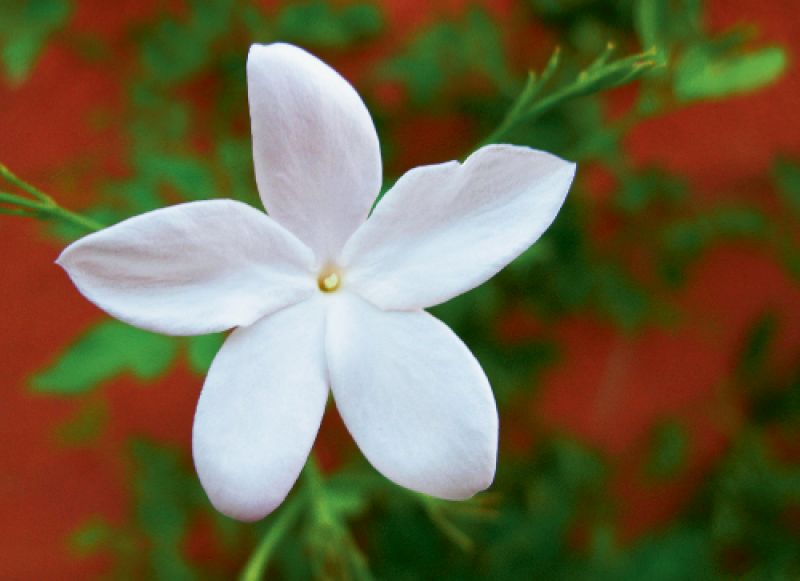
A longtime staple of Southern gardens, jasmine (a common name used for plants in the Jasminum genus as well as similar Trachelospermum varieties) offers a heady scent symbolic of springtime in the Holy City. Twining around fences and arbors, blooms appear in pastel shades, mostly white and pale yellow, as the weather warms. Some are agile climbers—guide them with the support of a structure, and they’ll take off—while others are more suited to stomp out weeds as they form a thick ground cover. Whether enveloping an entryway or woven underfoot, these three varieties transform your outdoor spaces with visual and olfactory charm.
Asian Jasmine
(Trachelospermum asiaticum ‘Angyo’)
This Trachelospermum variety is characterized by small, pinwheel-shaped yellow flowers. A rapid grower, it forms dense mats rising six to 12 inches high, providing excellent ground cover in places where erosion control is needed. Variegated leaves tipped with contrasting red tones deliver year-round interest in the garden.
Common White Jasmine
(Jasminum officinale)
Also known as “the poet’s jasmine,” this variety, which blooms from June to October, thrives in full or partial sun, with full sun resulting in more fragrant white flowers. Growing 12 to 20 feet in height, this jasmine does best when its stems are supported.
Light: Full or partial sun
Soil: Well-draining
Water: Water liberally twice a week until established.
Maintain: Prune after blooming period to prevent damage to next season’s blooms.
Zone: 7-10
Confederate Jasmine
(Trachelospermum jasminoides)
Contrary to its name, this variety is neither native to the Southeast nor a true jasmine. Rather, it is a member of the Trachelospermum genus of Asiatic woody vines, with milky sap in the leaves and stems. More cold tolerant than the common white, Confederate jasmine reaches up to 28 feet when trained on a structure and offers intensely fragrant white blooms from mid-spring through early summer.